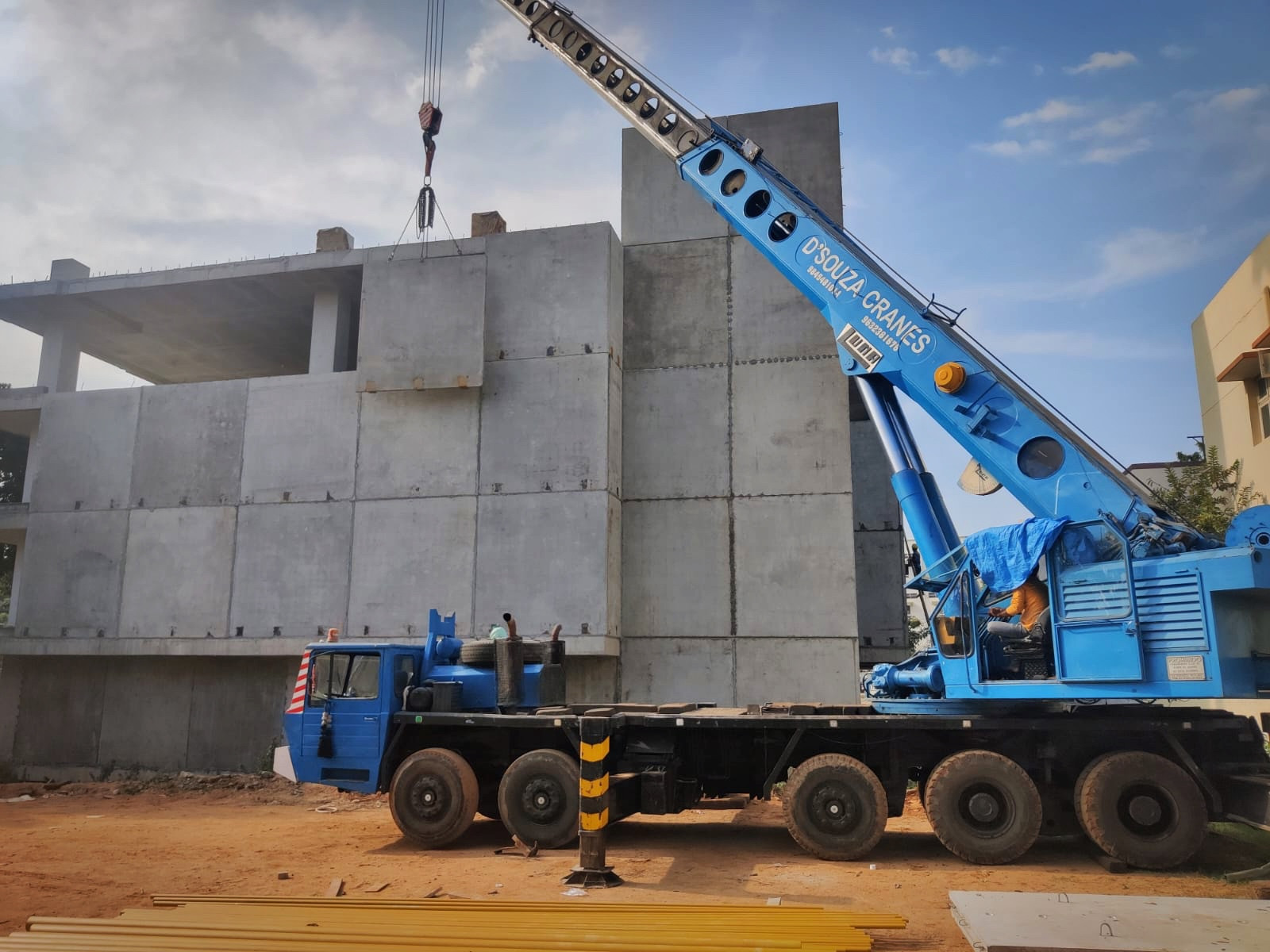The Indian construction landscape is undergoing a significant transformation with the increased adoption of precast concrete technology. Precast concrete, known for its durability, versatility, and efficiency, is redefining the way we build. From residential buildings to commercial spaces and large infrastructure projects, precast concrete is playing a pivotal role. Here’s a closer look at how precast is being used across India and some notable examples of its application.
Precast Concrete Applications in India
Residential Buildings
Precast has become a cornerstone in modern residential construction due to its speed, efficiency, and quality. The demand for housing in India is ever-increasing, and traditional construction methods often fall short in meeting this demand efficiently. Precast concrete elements such as walls, floors, and staircases can be manufactured simultaneously while the site is being prepared. This parallel processing speeds up construction timelines significantly. Furthermore, precast elements are produced in controlled factory environments, ensuring consistent quality and precision, which can sometimes be challenging to achieve with traditional on-site concrete pouring.
Example: In cities like Mumbai and Bangalore, several modern apartment complexes have embraced precast technology to ensure faster delivery and higher quality standards. For instance, the Lodha Group, a prominent real estate developer, has utilized precast concrete in its residential projects, resulting in reduced construction time and enhanced structural integrity.
Commercial Spaces
In the commercial sector, precast offers flexibility in design, allowing for creative architectural designs and the construction of complex structures. The ability to produce precast components off-site and assemble them on-site reduces construction timelines, making it an attractive option for commercial projects that require quick completion. Additionally, while the initial investment in precast concrete might be higher, the reduction in labor costs and faster construction times result in overall cost savings.
Example: In Delhi and Hyderabad, office buildings and shopping malls have successfully incorporated precast concrete in their construction. For instance, the Cyber Gateway in Hyderabad’s HITEC City, a major IT hub, extensively uses precast concrete, providing robust and aesthetically pleasing structures that cater to the needs of the dynamic IT industry.
Infrastructure Projects
Infrastructure projects like bridges, flyovers, and metro stations require materials that can withstand heavy loads and harsh environmental conditions. Precast is an ideal choice due to its high strength and durability. These projects benefit significantly from the reduced on-site construction time, which minimizes disruption to existing traffic and public inconvenience.
Example: The metro systems in cities like Chennai and Kochi have extensively used precast segments for tunnels, pillars, and station buildings, ensuring timely completion and structural integrity. The Kochi Metro, in particular, stands out for its use of precast concrete in constructing its elevated tracks and stations, contributing to the project’s efficiency and safety.
Popular Structures Made Using Precast Construction
The Hyderabad International Airport
One of the most prominent examples of precast in India is the Hyderabad International Airport. The terminal building at Hyderabad International Airport is a testament to the efficiency and strength of precast concrete. Precast elements were used for constructing columns, beams, and other structural components, ensuring a quick and sturdy construction process. This approach not only reduced the construction time but also maintained high standards of safety and quality.
The Akshardham Temple in Delhi
While traditionally built, parts of the Akshardham Temple complex utilized precast for some of its ancillary structures. This allowed for intricate designs and a rapid construction process without compromising on the temple’s aesthetic and architectural grandeur. The use of precast concrete in such a revered and iconic structure highlights the material’s versatility and ability to blend with traditional construction methods seamlessly.
Bandra-Worli Sea Link in Mumbai
The Bandra-Worli Sea Link in Mumbai is an engineering marvel and an iconic structure that extensively used precast concrete segments. The use of precast concrete not only accelerated the construction process but also provided the necessary strength to withstand the marine environment’s challenging conditions. The bridge stands as a testament to the capabilities of precast concrete in constructing large-scale infrastructure projects that require both durability and precision.
Conclusion
Precast concrete is revolutionizing the construction industry in India. Its applications range from residential and commercial buildings to critical infrastructure projects. The examples mentioned highlight the versatility and efficiency of precast concrete, making it a preferred choice for modern construction. As India continues to grow and urbanize, precast concrete will undoubtedly play a significant role in shaping the country’s skyline, ensuring durable, cost-effective, and aesthetically pleasing structures.
In conclusion, the adoption of precast concrete in India marks a significant step forward in the construction industry. It offers a promising solution to the challenges of rapid urbanization, providing a method that is both efficient and sustainable. By continuing to embrace this technology, India can look forward to a future where its skyline is transformed with innovative and robust structures that stand the test of time.

